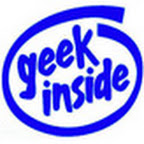I got my isostick yesterday and started playing around with it.
However on my HP ProBook 4720s with win7 iso loaded in the config, it will not boot.
The bios does recognize the optical disk, but neither loads isosel nor win 7.
The iso_filename.txt is named correctly and does not have an extra .txt
I tried on the same machine with a VMWare machine, but that one only loads the win7 disk (so it is bootable)
I have the latest firmware applied already.
On another note, changing the ISO in iso_filename.txt changes immediatly, but clearing the file, still keeps the last iso mounted, until I unmount the isostick completely and reconnect it to my laptop. Is this normal behaviour?
Regards,
Magno
edit: created a microsoft virtual pc to try it there as well, that one also keeps booting the win7 iso.
Edited by Magno, 29 August 2012 - 10:20 AM.


















